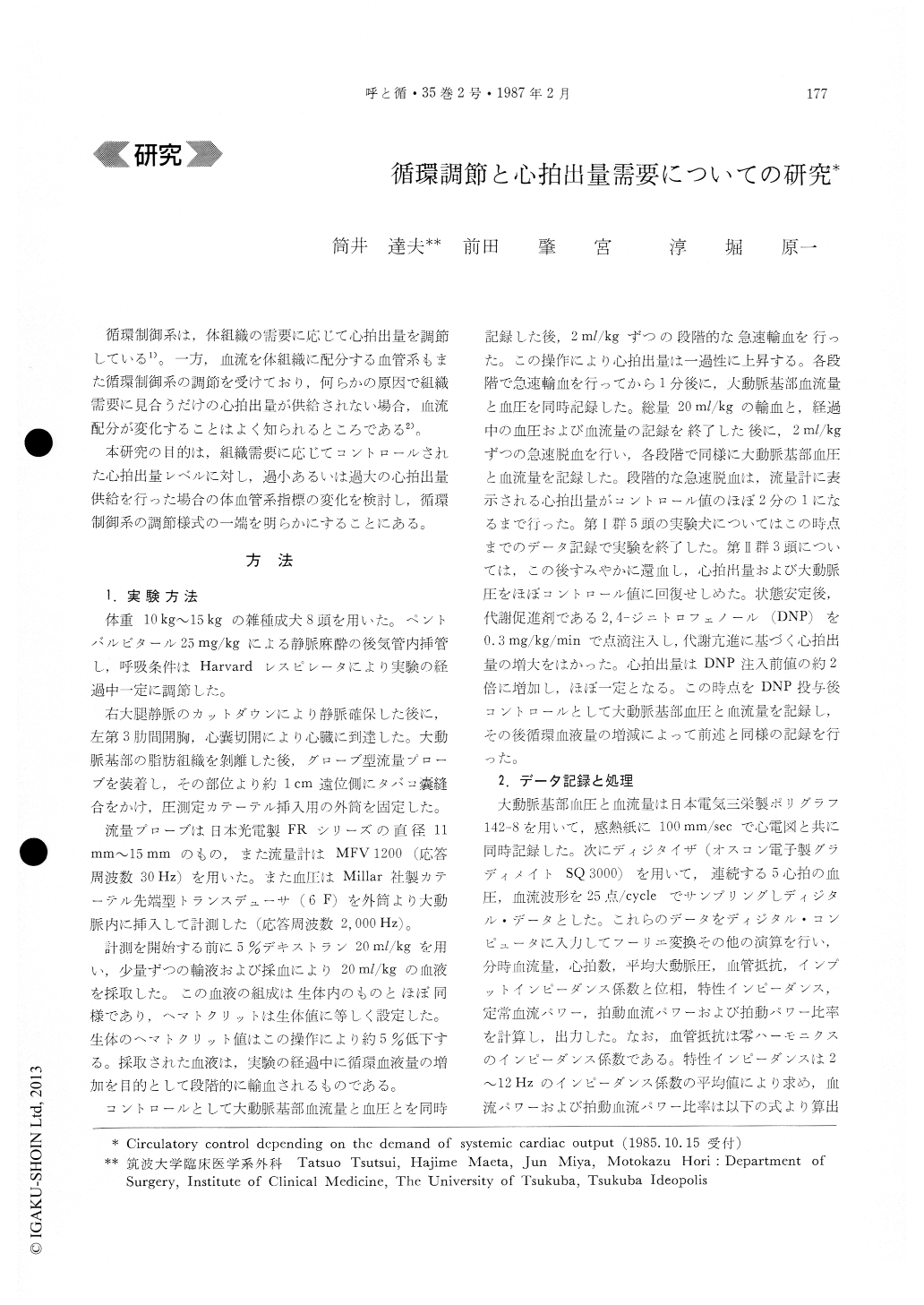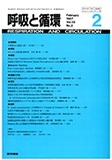Japanese
English
- 有料閲覧
- Abstract 文献概要
- 1ページ目 Look Inside
循環制御系は,体組織の需要に応じて心拍出量を調節している1)。一方,血流を体組織に配分する血管系もまた循環制御系の調節を受けており,何らかの原因で組織需要に見合うだけの心拍出量が供給されない場合,血流配分が変化することはよく知られるところである2)。
本研究の目的は,組織需要に応じてコントロールされた心拍出量レベルに対し,過小あるいは過大の心拍出量供給を行った場合の体血管系指標の変化を検討し,循環制御系の調節様式の一端を明らかにすることにある。
The purpose of this study was to determine the cont-rol pattern of the systemic circulatory control system for too little or too much cardiac output compared with systemic output demand (cardiac output mismatch).
In dogs, in which the cardiac output mismatch was caused by blood volume change with 2ml/kg infusion or extraction every time from control level, two series of experiments were performed. In the first series, chan-ges of vascular resistance (R) and characteristic impe-dance (Zo) against the cardiac output mismatch were determined. R was decreased as given cardiac output was increased. On the other hand, Zo was constant for excessive cardiac output, but was increased as given output was decreased. In the second series, systemic output demand was increased twice as much as control value using 2, 4-dinitrophenol (MP), a metabolic stimulant, and the circulatory responses against the cardiac output mismatch were recorded. Patterns of changes in R and Zo for given output were the same as those of the standard state.
In both series, steady power was increased linearly as given output was increased. On the other hand, pulsatile power was small when given output was smaller than the control level, and increased when given output was increased. Therefore, ratio of the pulsatile power to the total power was the smallest at the systemic output demand level.
Results indicate that the systemic circulatory control system makes power efficiency of blood flow maximum at the systemic output demand level by regulating vas-cular characteristics.

Copyright © 1987, Igaku-Shoin Ltd. All rights reserved.


